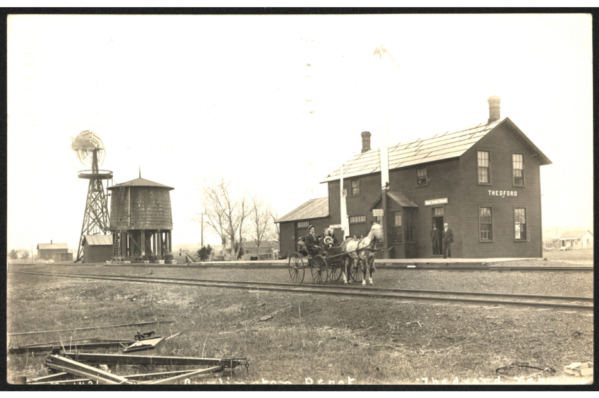The Sandhills Historical Landmark
While you are stopped, learn about: Thedford Arboretum
Thedford, NE; Thomas County
The Sandhills, Nebraska’s most unique physiographic feature, covers about one-fourth of the state. The sandy soil acts like a giant sponge, soaking up rain and forming a vast underground reservoir. Hundreds of permanent lakes are found here. However, the same sandy soil makes the area unsuitable for cultivation. Grasses flourish, making the Sandhills ideal cattle country. Although the Sandhills were long considered “an irreclaimable desert,” cattlemen had begun to discover the Sandhills’ potential as range land by the early 1870’s. Huge ranches were established here. Unsuccessful attempts at farming were made in the Sandhills region in the late 1870’s and again around 1890. The Kinkaid Act of 1904 allowed homesteaders to claim a full section of land, rather than the quarter-section previously allowed. Nearly nine million acres were successfully claimed by “Kinkaiders” between 1910 and 1917. Some of the Kinkaiders attempted to farm, but most of these attempts failed. Many of the largest ranches broke up about the same time due to regulations against fencing federal range. Today the Sandhills contain many ranches, but none so large as those of the past.
Looking for resources? Login to view more.
While you are stopped, learn about: Thedford Arboretum
39253 NE-2 Thedford, NE 69166
Only a short walk north of the Upper Loup NRD office, the Thedford Rural Fire Hall Arboretum awaits. Enjoy a picnic at the tables and benches surrounded by a wide range of plant species. Take a walk along the paved sidewalk meandering past Crabapples, Elderberries, Amur Maples, and more. While exploring the Arboretum, you will find as many as 30 species of trees as well as over 30 species of shrubs. The Arboretum also is a host to a pollinator habitat with over 50 species of pollinator plants. Test your plant knowledge with the wooden species identification markers as you wander the area.
Send us feedback on this and other locations.
These buttons follow the default direction of each route. You can use the previous button to move in the opposite direction, or edit your team’s settings in the manager dashboard.







